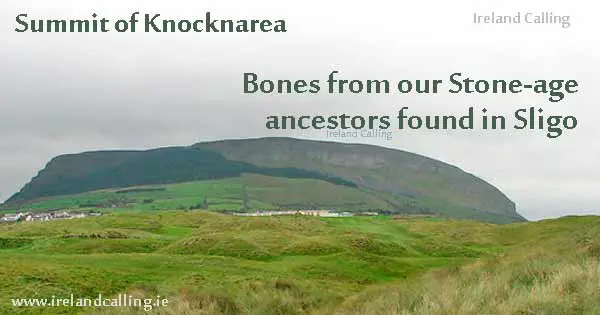Human bones from 5,000 years ago have been discovered by archaeologists in a cave in County Sligo. The discovery was made by Thorsten Kahlert, during an investigation inside one of the caves, which experts currently know very little about.

Kahlert, a graduate of the Institute of Technology (IT) Sligo, said: “I was surveying one small cave when something on the cave floor caught my eye. I took a closer look and realized it was a human foot bone.”
Further investigation revealed 13 small bones, belonging to an adult aged about 30, and a young child. Interestingly, the two don’t appear to have died at the same time, with the adult remains dating around 300 years before the child’s.
Dr Marion Dowd, also of the IT Sligo, believes that the bodies were already dead when they were placed in the cave, as part of an ancient tradition called excoriation. She explained: “When people died in prehistory, their corpses were sometimes laid out in caves. After one or two years, when the flesh and soft tissue had decomposed, the dry bones were collected and removed to another location.
“We can imagine, therefore, that Stone Age people in Sligo between 5,000 and 5,500 years ago carried the corpses of their dead up the mountain. After an arduous climb, they then squeezed through the narrow cave entrance, and laid the dead person on the cave floor.
“Sometime later, maybe after one or two years, people returned to the cave and collected the bones and took them to another location. Where they took them, we don’t know. But the monuments on the summit of Knocknarea are one likely possibility. All that was left behind in the cave were some small bones that had been overlooked.
“It’s an enormously exciting discovery. This might seem like a small quantity but it has yielded fantastic results.”
The bones have now been removed and taken to Queen’s University Belfast, where they will be studied by Dr Catriona McKenzie, an archaeologist who specialises in the analysis of human bones.
Kahlert, the man who made the discovery, was part of the team that removed the remains from the cave. He described the frightening task that he and his colleagues faced: “You have to squeeze through, head first, lying on your stomach, and after a while you get into a larger passage. It is an entirely natural cave but you have to crouch down. For the most part it is not possible to stand upright.”
Dr Dowd added that the caves in the mountains of County Sligo may hold more significant pieces of history within them, but as yet they have not been investigated fully.
newsletter.html”]
history.html